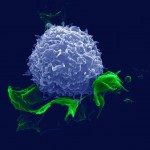Link to Pubmed [PMID] – 27001544
Exp. Neurol. 2016 Sep;283(Pt B):489-500
Oligodendrocyte development has been studied for several decades, and has served as a model system for both neurodevelopmental and stem/progenitor cell biology. Until recently, the vast majority of studies have been conducted in lower species, especially those focused on rodent development and remyelination. In humans, the process of myelination requires the generation of vastly more myelinating glia, occurring over a period of years rather than weeks. Furthermore, as evidenced by the presence of chronic demyelination in a variety of human neurologic diseases, it appears likely that the mechanisms that regulate development and become dysfunctional in disease may be, in key ways, divergent across species. Improvements in isolation techniques, applied to primary human neural and oligodendrocyte progenitors from both fetal and adult brain, as well as advancements in the derivation of defined progenitors from human pluripotent stem cells, have begun to reveal the extent of both species-conserved signaling pathways and potential key differences at cellular and molecular levels. In this article, we will review the commonalities and differences in myelin development between rodents and man, describing the approaches used to study human oligodendrocyte differentiation and myelination, as well as heterogeneity within targetable progenitor pools, and discuss the advances made in determining which conserved pathways may be both modeled in rodents and translate into viable therapeutic strategies to promote myelin repair.

